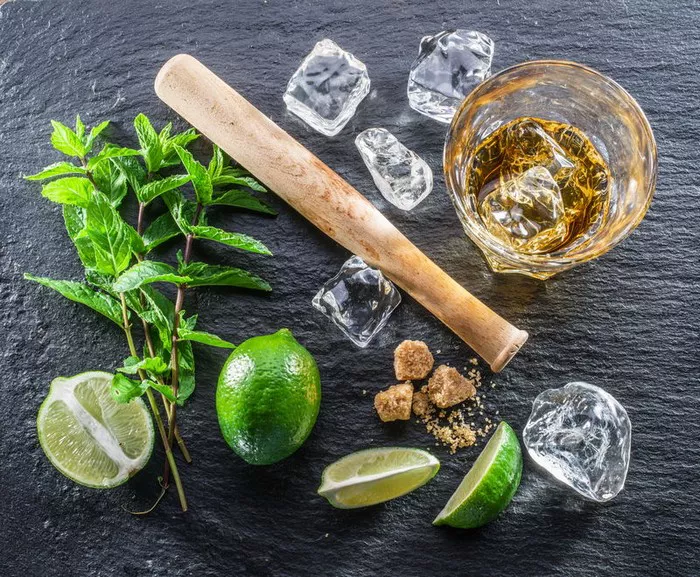The Margarita cocktail, with its zesty and refreshing blend of tequila, lime, and orange liqueur, is a beloved classic in the world of mixology. Known for its vibrant flavors and the perfect balance of sweet and sour, the Margarita has become a go-to drink for those seeking a taste of Mexico and a touch of sophistication. In this professional article, we will delve into the art of crafting the perfect Margarita cocktail. Whether you’re an experienced mixologist or a novice enthusiast, this comprehensive guide will take you through the steps to master this timeless cocktail.
The Origin of the Margarita Cocktail
Before we embark on the journey of crafting the Margarita, let’s explore its intriguing history. The exact origin of the Margarita cocktail remains a subject of debate, with several stories claiming to be its source. One popular theory attributes its creation to Carlos “Danny” Herrera, a Mexican bartender, who crafted the cocktail for a customer allergic to all alcohols except tequila. Herrera mixed tequila, lime juice, and Cointreau, serving it in a salt-rimmed glass. This story is widely accepted as the Margarita’s birth.
The Margarita’s name is believed to be derived from the Spanish word for “daisy,” which is a classic cocktail template. Margarita, meaning “daisy” in Spanish, refers to the drink’s simple structure. Regardless of its precise origins, the Margarita has since evolved into one of the most popular cocktails in the world.
The Essential Components
The hallmark of a great Margarita cocktail lies in its simplicity. To craft a Margarita, you’ll need to gather the essential components:
Tequila: Tequila is the backbone of the Margarita. Opt for a high-quality, 100% agave tequila, preferably a blanco (silver) or reposado (lightly aged) variety. The choice of tequila greatly impacts the cocktail’s flavor.
Triple Sec or Orange Liqueur: Triple sec or orange liqueur adds a touch of sweetness and citrus aroma to the Margarita. Cointreau and Grand Marnier are popular choices, but there are many other brands available.
Fresh Lime Juice: Freshly squeezed lime juice provides the Margarita with its signature tartness and a burst of citrus flavor. It’s crucial to use real lime juice rather than bottled substitutes for the freshest taste.
Salt: A key element of the Margarita’s presentation is the salted rim of the glass. Kosher salt or coarse sea salt is typically used for rimming the glass. The salt adds a savory contrast to the drink’s sweetness and sourness.
Ice: Ice is vital for chilling the Margarita and achieving the ideal level of dilution. Use high-quality, purified ice to prevent off-flavors in the cocktail.
Crafting the Perfect Margarita
Crafting the perfect Margarita cocktail is an art form that requires precision and attention to detail. Follow these steps to ensure your Margarita is a masterpiece of flavor and presentation:
Select the Right Glass: A classic Margarita glass, also known as a martini glass, is the preferred vessel for serving Margaritas. These glasses have a wide, shallow bowl that allows the drink’s aroma to shine.
Prepare the Glass: To create the Margarita’s signature salt rim, run a lime wedge around the rim of the glass to moisten it. Then, dip the glass upside down into a shallow plate of kosher salt or coarse sea salt to coat the rim. Gently shake off any excess salt.
Measure with Precision: To achieve consistency in your Margarita, use a jigger or measuring tools to pour the tequila, orange liqueur, and lime juice. The classic ratio is 2 parts tequila, 1 part orange liqueur, and 1 part lime juice, but this can be adjusted to suit your taste.
Shake Vigorously: Fill a cocktail shaker with ice and add the tequila, orange liqueur, and lime juice. Shake the ingredients vigorously for about 10-15 seconds. The vigorous shaking chills the cocktail and froths it up, creating a delightful texture.
Strain into the Glass: Use a fine strainer or a Hawthorne strainer to pour the Margarita into the prepared glass. Straining ensures that any ice shards or citrus pulp are kept out of the final presentation.
Garnish with a Lime Wheel: Place a lime wheel or wedge on the rim of the glass as a final garnish. This adds a visual touch and reinforces the cocktail’s citrus aroma.
Serve Immediately: Margaritas are best enjoyed fresh and immediately after preparation. The presentation and texture are at their peak when served promptly.
Margarita Presentation and Garnishes
Margaritas are not only about taste but also about presentation. Here are some key aspects to consider when it comes to Margarita presentation and garnishes:
Classic Glassware: Classic Margarita glasses, with their wide, shallow bowls, are the traditional choice for serving Margaritas. These glasses allow the cocktail’s aromas to shine and make for an elegant presentation.
Salted Rim: The signature salted rim is an essential part of the Margarita’s presentation. To achieve the perfect salt rim, moisten the glass’s rim with a lime wedge and dip it into kosher salt or coarse sea salt.
Fresh Garnishes: A fresh lime wheel or wedge on the rim of the glass serves as both a garnish and an aromatic accent. It reinforces the Margarita’s citrusy aroma and adds a pop of color.
Creative Touch: While the classic Margarita presentation is timeless, you can get creative with your garnishes. Consider adding a slice of jalapeño, a wedge of pineapple, or a sprig of fresh mint to infuse your Margarita with unique flavors and visual appeal.
In Conclusion
The Margarita cocktail, with its delightful blend of tequila, orange liqueur, and fresh lime juice, has earned its place as a classic in the world of mixology. Crafting the perfect Margarita is an art that requires precision and attention to detail.


